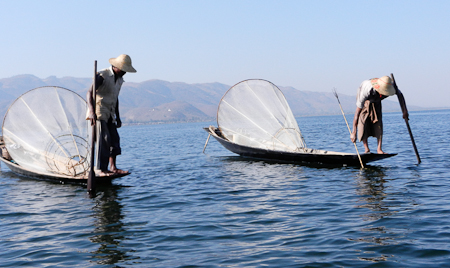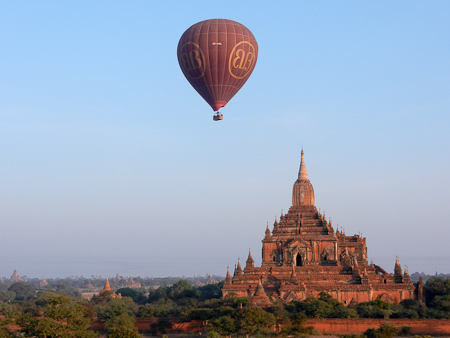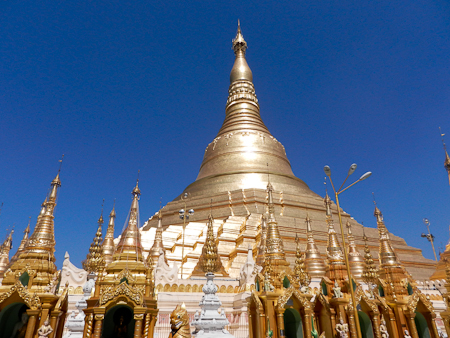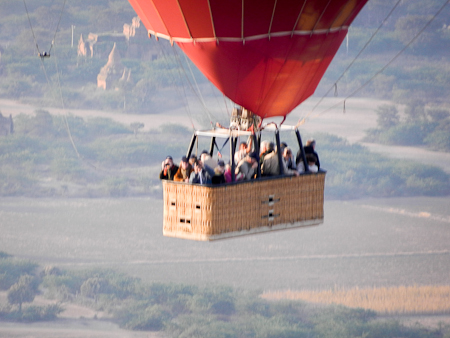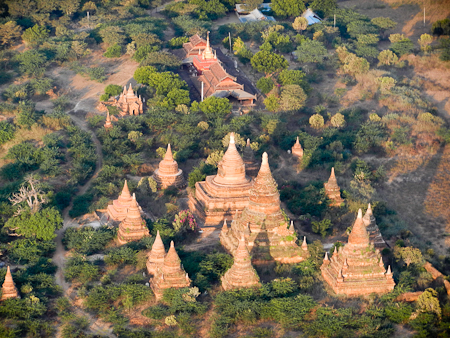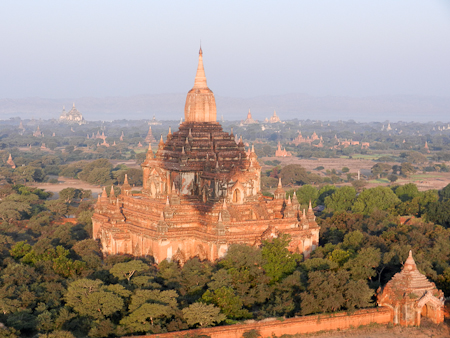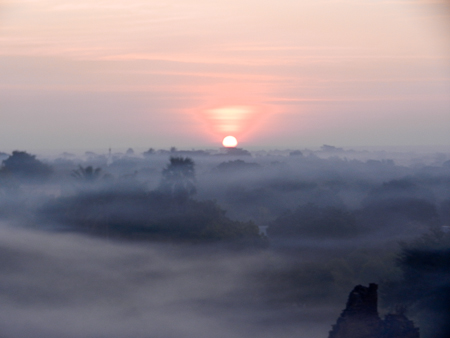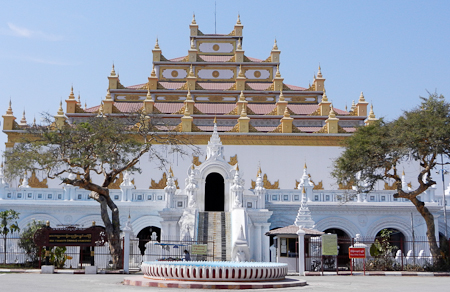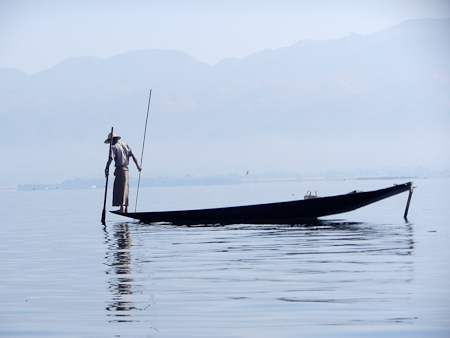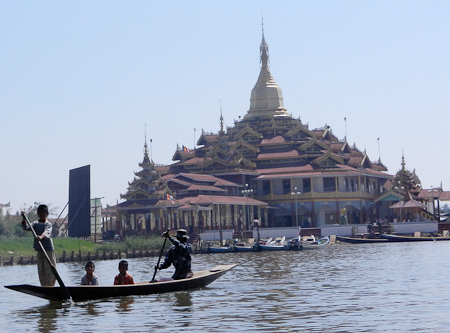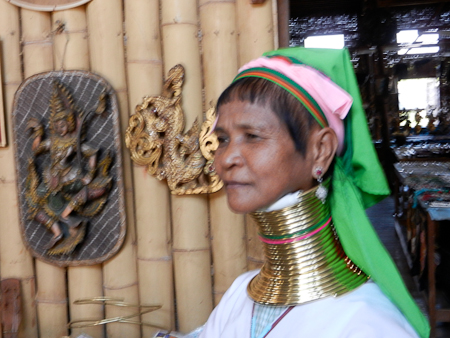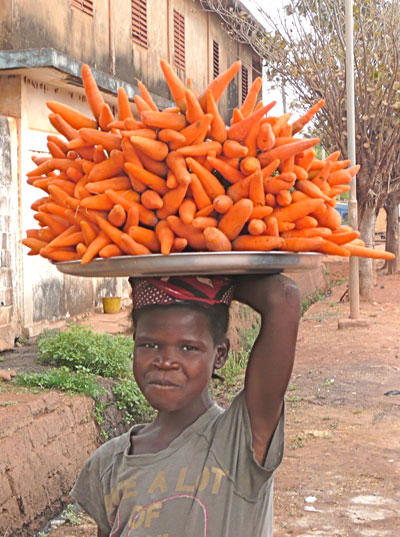Impressions of Burma (Myanmar)
Burma was Burma until 1989 when the military, which had taken over in 1962, renamed the country Myanmar. I’m not sure why I resist the “new” name; the country will always be Burma to me. Since there has been an “awakening” in the last several months with the government releasing political prisoners and making overtures of reform to the world, maybe they will ultimately return to their historic name. I hope so. “Burma” has so much more of an exotic sound to it than Myanmar, and Burmese history and culture go back over a thousand years.
I found the Burmese people to be kind, gentle, service oriented and deeply religious. 89% of the population is Buddhist and “Land of the Pagodas” is a very apt moniker for the country. In Buddhism good deeds accrue “merit” and those who lead a virtuous life accumulate much merit — and are likely to be reborn into better circumstances in the next life. One way of being righteous and building up merit is to show reverence to Buddha by building (and/or maintaining) a stupa or pagoda in his honor. In one 30 square mile area near Bagan there are 2200 pagodas (stupas); in all of Burma there are thousands and thousands more. Stupas dot the countryside and speak to the devoutness of the Burmese. It is clear that much, much merit has been accrued.
Burma is bordered on the northwest by India and Bangladesh, on the northeast by Tibet and China, on the southeast by Laos and Thailand, and by the Bay of Bengal and Andaman Sea to the south. The coastline is about 1,200 miles long. Fifty-five million people live here, but in 2010 they only received 300,000 tourists (compared with 14 million in Thailand, next door). This is likely to change in the near future as the U.S. and many European countries have recently lifted economic sanctions imposed on the military government. January/February is the high season for tourism so even though Burma is not a tourist haven, many of the hotels we stayed at were fully booked and tour guides were at a premium.
The thing that is most noticeable to an outsider coming to Burma is that Buddhism permeates society, much as Hinduism does in India. A visit to Burma is primarily about visiting pagodas and monasteries and learning about Buddhist philosophy, culture and history. While Buddhism is certainly considered one of the world’s main religions, it always seemed to me more of a philosophy than a religion. There is no God in Buddhism, just a collection of moral precepts and a set of principles that if understood and followed would, I believe, make the world a better place.
If Buddhism is a mile deep in terms of its dharma (teachings), I understand maybe the first 50 feet. What I understand, I like. Selflessness, compassion, non-violence, the sense that one should treat others in the human race and those in the animal kingdom with dignity and respect are all important concepts. So is the idea that to live is to suffer and to find meaning in life one must understand/come to grips with suffering. Doing so is a little easier because of the Buddhist sense that everything is impermanent – life and the world evolve and one must let go of and/or not become attached to anything (people, relationships, things). The “Four Noble Truths” and the “Eightfold Path” begin to dig into the underpinnings of the Buddhist philosophy, but I won’t get into all that here. Suffice it to say that people in the western world would do well to know something about ideas coming from this rich, humanistic tradition.
So . . . Burma. My impressions are formed from a recent eleven-day visit in early 2012. We traveled to Yangon (the largest city and former capital), Mandalay (the ancient capital), Bagan and Inle Lake. Our adventure included a wonderful two-day boat cruise on the Irrawaddy River and – the highlight of the trip – a dawn balloon flight over the vast pagoda fields of Bagan.
Yangon is a teaming city of five million people, with all the plusses and minuses of all major Asian cities. The local markets were thriving and the major tourist attraction, the 2500-year-old (through many renovations) Shwedagon Pagoda (below), lived up to its hefty reputation as one of the major religious monuments of the world. We stayed only one night – at the classic colonial British hotel, the Strand – but it was a good jumping off place for our trip, particularly since it is the only city in Burma with international air service.
Something for the traveler to know about Burma: They don’t take credit cards (as of spring, 2012) and they don’t have ATM machines. Also, they are very picky about the cash they take – only pristine, new bills (the dollar and euro). That took some getting used to, as did the general (though not total) lack of Internet service. But, hey, what do you expect in a Third World country that has had western sanctions against it for 20+ years? Just be warned!
One interesting thing that I had not seen elsewhere occurred in a small square outside of a large Buddha statue. A vendor had a large birdcage with 100+ small birds crammed into it. I asked the guide what this was about and she said you could buy a bird for about 80 cents and let it free. What a concept – imprison a poor creature and look to the basic compassion of humanity to negate your evil work. It seemed like an activity not to encourage, but instinct prevailed and we bought the freedom of two small birds. A small benevolence from humankind.
Visiting monasteries throughout the country was enlightening. Many monks begin their spiritual journey as young children, given/committed to the monastery by devout (and/or poor) families. Monasteries would not survive without the commitment of the surrounding Buddhist culture to provide sustenance in daily food offerings to the sacred brotherhood. These two pictures somehow spoke volumes to me about the monastic community and its way of life:
Even though I know something about world historic sites and ruins, I was not aware until planning for this trip of Bagan and its 2200 pagodas. It is incomprehensible to conceive of such architectural diversity, creativity and spiritual commitment within a 30 square mile area. The ultimate experience was to see it all from a hot-air balloon, at dawn. As always, pictures convey the setting better than words (Note in the third picture below the shadow of our balloon on the middle of the pagoda):
Sunrises and sunsets were spectacular and memorable. They combined natural beauty with spiritual significance in Bagan like few other places in the world. If you go to Burma, definitely go to Bagan. And if you go to Bagan, definitely do the dawn hot air balloon ride. It’s expensive, but something you will remember the rest of your life.
When Rudyard Kipling wrote about “The Road to Mandalay” most did not realize that the “road” was the Irrawaddy River. The Irrawaddy runs though the heart of Burma from north to south. Our two-day cruise stopped at two small villages along the way for us to see local village life as it has existed for hundreds of years. The boat (the Pauken) was very nice and I would recommend to anyone who likes cruises or lounging around in comfort in a remote part of the world. Here is one of the not so energetic villagers we met along the way. If/when he wakes up he will be supplying the power to run the pottery wheel that generated all the pots in the background:
Mandalay was pagodas and pagodas and monasteries and more pagodas. Here are a couple, to give you a flavor of what there is to see:
The Inle Lake area in east-central Burma is unique. On a map it looks like a typical lake, 12 miles long, and a couple of miles wide, but it is not like any other lake I have seen. It is the Venice of Southeast Asia with many, many homes on stilts in water “streets” over the 6 foot deep, seaweed filled lake. (It gets another several feet deep in rainy season, July/August – which is why the homes are on stilts). There are many canals with small villages with people fishing, harvesting the seaweed, and doing local crafts. It makes for a unique water/community environment.
The “long neck” lady above is a member of the Karen (also known Kayan or Padaung) people of eastern Burma and western Thailand. The coils around the neck have an ancient cultural significance though one cannot help but wonder if in the present day world the motivation to inflict such “cruelty” isn’t really the almighty tourist dollar (the women insist it is “no problem”). Whatever, the women are friendly and seem resigned to their unique fate. (You can say that about most people in Third World countries, particularly women.)
On our last full day in the Inle Lake area we took a 2½ hour, 65 mile car ride (each way, with terrible, terrible roads) to the Pindaya Cave. While the journey was tedious, the 8,000 Buddha’s in this unique Burmese shrine were utterly spectacular. The following photo does not do justice to the cave, but check out this You Tube video and see a very good sense of religious motivation to create something of spiritual significance: http://www.youtube.com/watch?v=vwuUXiif8A0
In Summary
Burma is a fascinating country which should become much more of a tourist destination in the years ahead as it emerges from 50 years of military rule into the (relative) sunshine of democratic principles. Though it will take a while for the infrastructure to catch up, the wonderful people are gracious hosts and they present a culture rich in the Buddhist tradition. I would encourage you to visit.
Glenn Detrick 3/12

